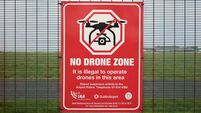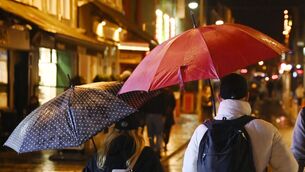Road between Cork City centre and Ballintemple is considered the most dangerous in Cork

A speed enforcement zone that runs along Victoria Rd and Blackrock Rd on the southside of the city for 2.3km has been identified as having the worst accident record in Cork over a five-year period.
Gardaí recorded one fatal accident, three serious injuries, and 36 minor accidents on the route between 2010 and 2014.
Under a weighting system for identifying where Go Safe cameras should operate, it is the 22nd most dangerous road in the country .
Each type of collision was assigned a weighted value, with a fatal collision given 10 points; a serious accident 5 points; and a minor collision a value of 1 point.
A stretch of the N20 Cork-Limerick road near Grenagh between Blarney and Mallow, on which there were three fatal accidents over the same period, has a lower rating because it was the scene of fewer minor accidents.
It is one of 22 new areas in Cork City and county recently added as speed camera locations by gardaí.
A long stretch of the N71 on either side of Rosscarbery in West Cork, which has also witnessed three fatal accidents, has also been added to the list.
The second most dangerous stretches in Cork are jointly part of the N72 Mallow-Killarney road near Banteer and Harbour View Road in the Knocknaheeny suburb of the city.
As the largest county, with a road network of more than 12,900km, it is unsurprising that Cork has the highest number of speed camera locations at 92.
However, according to the garda rating system, nine of the 10 most dangerous stretches of road in Ireland are located in Dublin.
The road with the highest risk level in terms of road safety in the country is located between O’Connell Bridge and Essex Quay on the south bank of the Liffey.
The 700m route, which has a 30kph speed limit, has been the scene of four fatal collisions, nine serious accidents, and 100 minor collisions over a five-year period.
It is rated as considerably more dangerous than any other stretch of road on the country’s 96,000km road network.
The most dangerous stretch or road in Munster, ranked 13th nationally, is considered to be part of the old main Dublin-Limerick road that runs between the University of Limerick and Annacotty.
More than 1,000 speed enforcement zones where Go Safe cameras now operate have all been rated by gardaí based on their traffic accident history between 2010 and 2014.
It is estimated that the use of speed cameras prevents an average of 20 road fatalities each year. A cost-benefit analysis of the speed camera network found they generated net benefits of more than €70m per annum.
A garda spokesman said 31% of fatal crashes occurred in high-risk stretches of road before the introduction of speed cameras but that the figure had reduced to just 14% by 2015.
He defended its rating system, stating it was based on continuous and extensive analysis of the collision history of the road network.
“The Garda National Traffic Bureau decides on the locations where the speed cameras will operate and they are where fatal, serious and minor collisions have occurred,” said the spokesman.
The 355 new zones introduced last month all required a minimum of 10 points to be included for speed camera operations.
A total of 49 former zones were removed as locations for speed cameras on the basis that no collision had occurred in them the past five years.
However, almost 290 existing zones remain in operation, despite being given a rating of less than 10.












